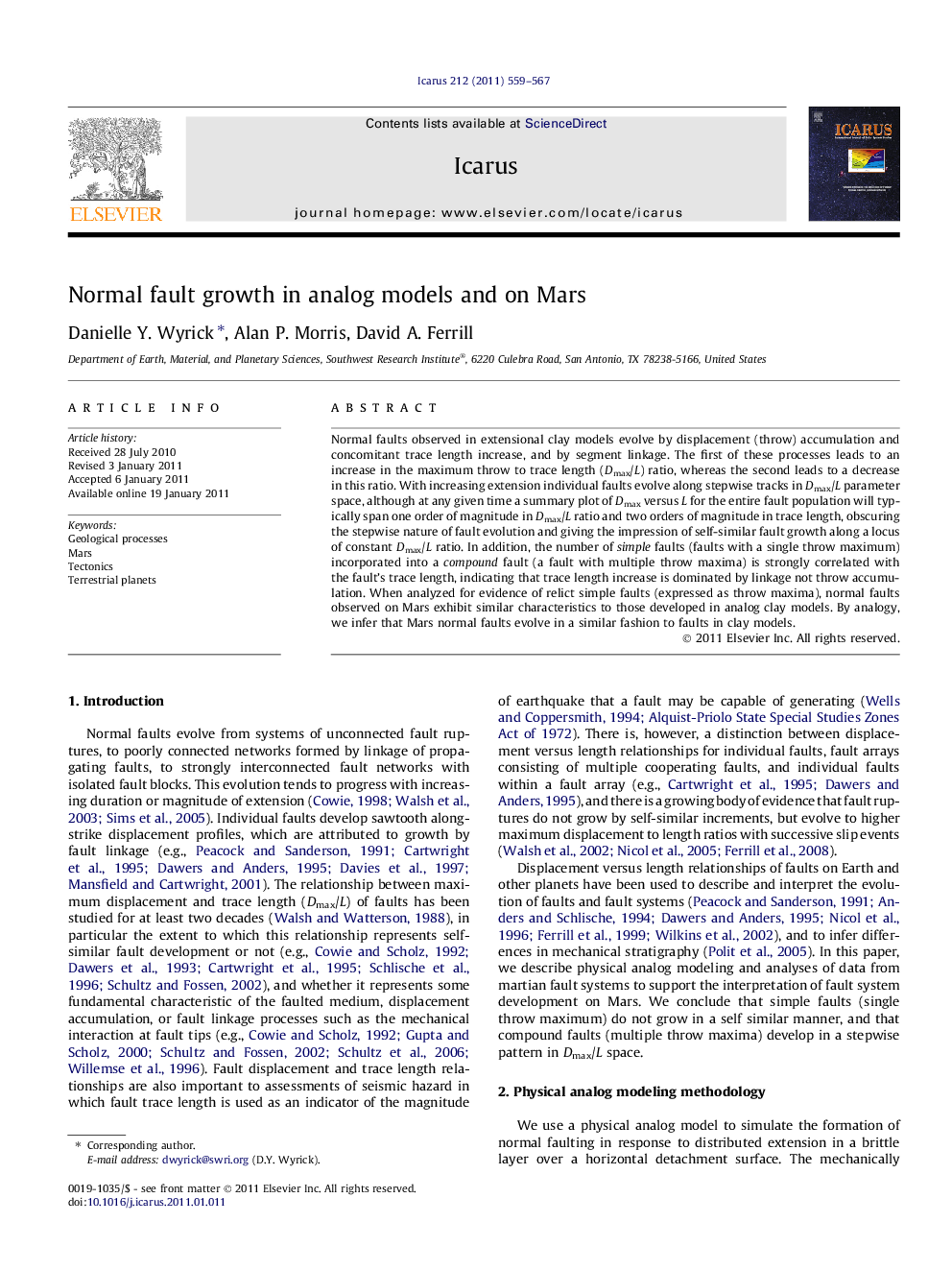| کد مقاله | کد نشریه | سال انتشار | مقاله انگلیسی | نسخه تمام متن |
|---|---|---|---|---|
| 1774581 | 1021169 | 2011 | 9 صفحه PDF | دانلود رایگان |

Normal faults observed in extensional clay models evolve by displacement (throw) accumulation and concomitant trace length increase, and by segment linkage. The first of these processes leads to an increase in the maximum throw to trace length (Dmax/L) ratio, whereas the second leads to a decrease in this ratio. With increasing extension individual faults evolve along stepwise tracks in Dmax/L parameter space, although at any given time a summary plot of Dmax versus L for the entire fault population will typically span one order of magnitude in Dmax/L ratio and two orders of magnitude in trace length, obscuring the stepwise nature of fault evolution and giving the impression of self-similar fault growth along a locus of constant Dmax/L ratio. In addition, the number of simple faults (faults with a single throw maximum) incorporated into a compound fault (a fault with multiple throw maxima) is strongly correlated with the fault’s trace length, indicating that trace length increase is dominated by linkage not throw accumulation. When analyzed for evidence of relict simple faults (expressed as throw maxima), normal faults observed on Mars exhibit similar characteristics to those developed in analog clay models. By analogy, we infer that Mars normal faults evolve in a similar fashion to faults in clay models.
Research highlights
► Faults develop in a stepwise pattern of displacement versus length growth.
► Fault trace lengths grow at 100 times the rate of throw accumulation.
► The number of fault segments is positively correlated with fault trace length.
Journal: Icarus - Volume 212, Issue 2, April 2011, Pages 559–567